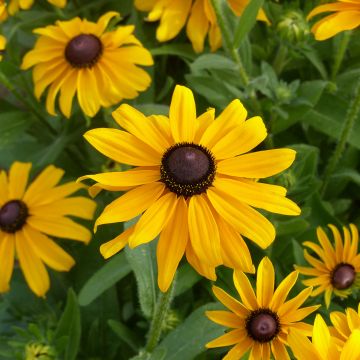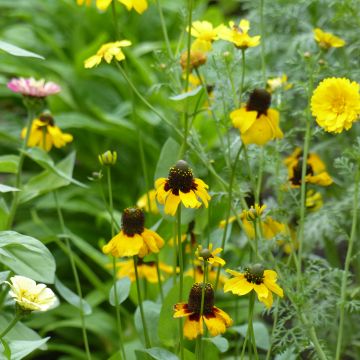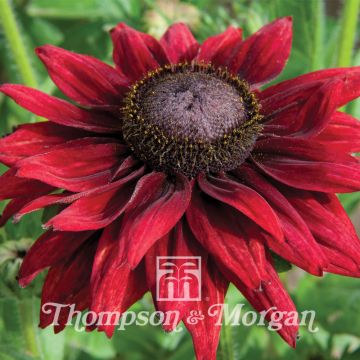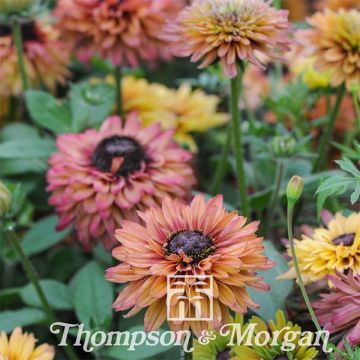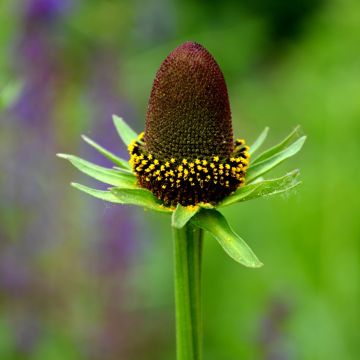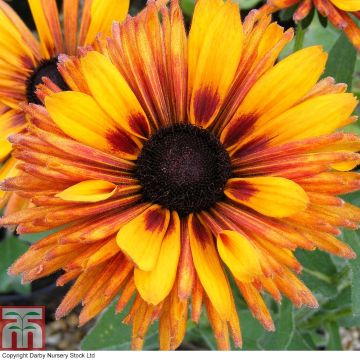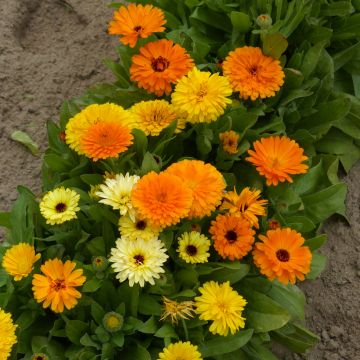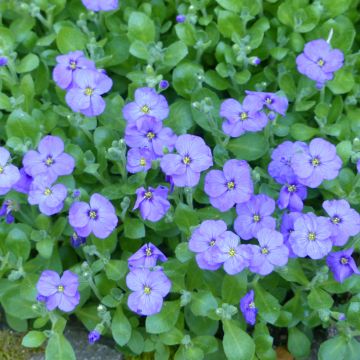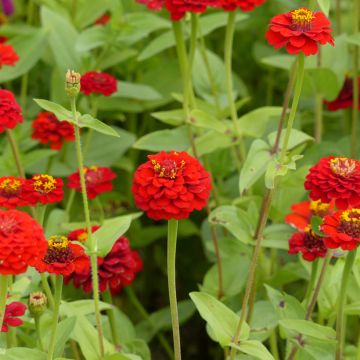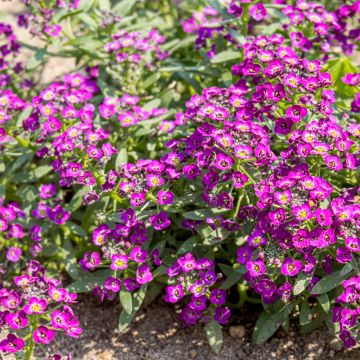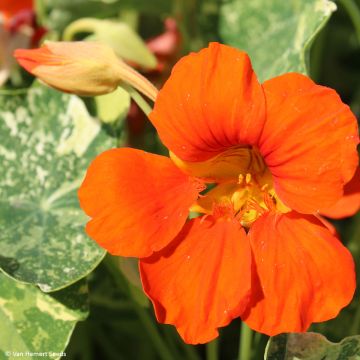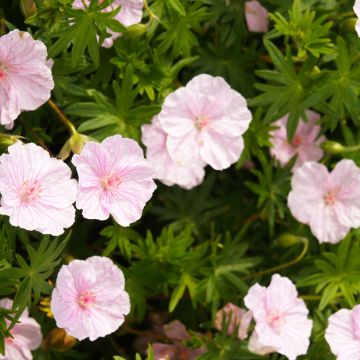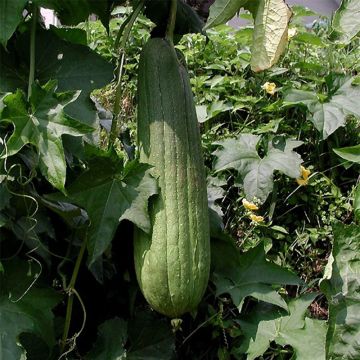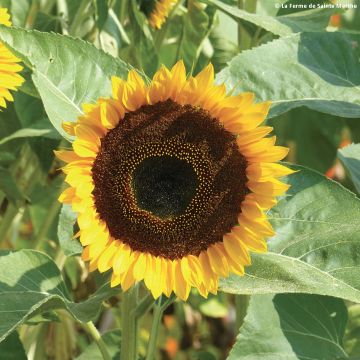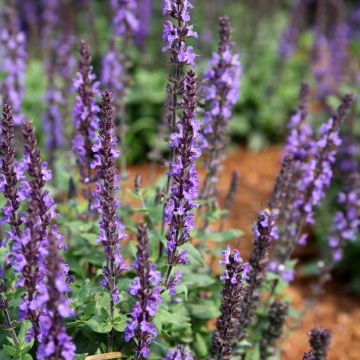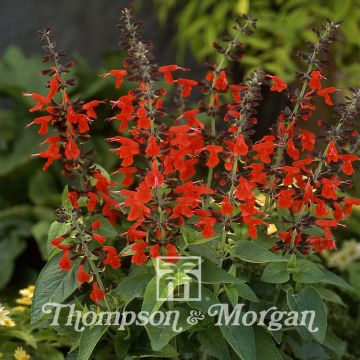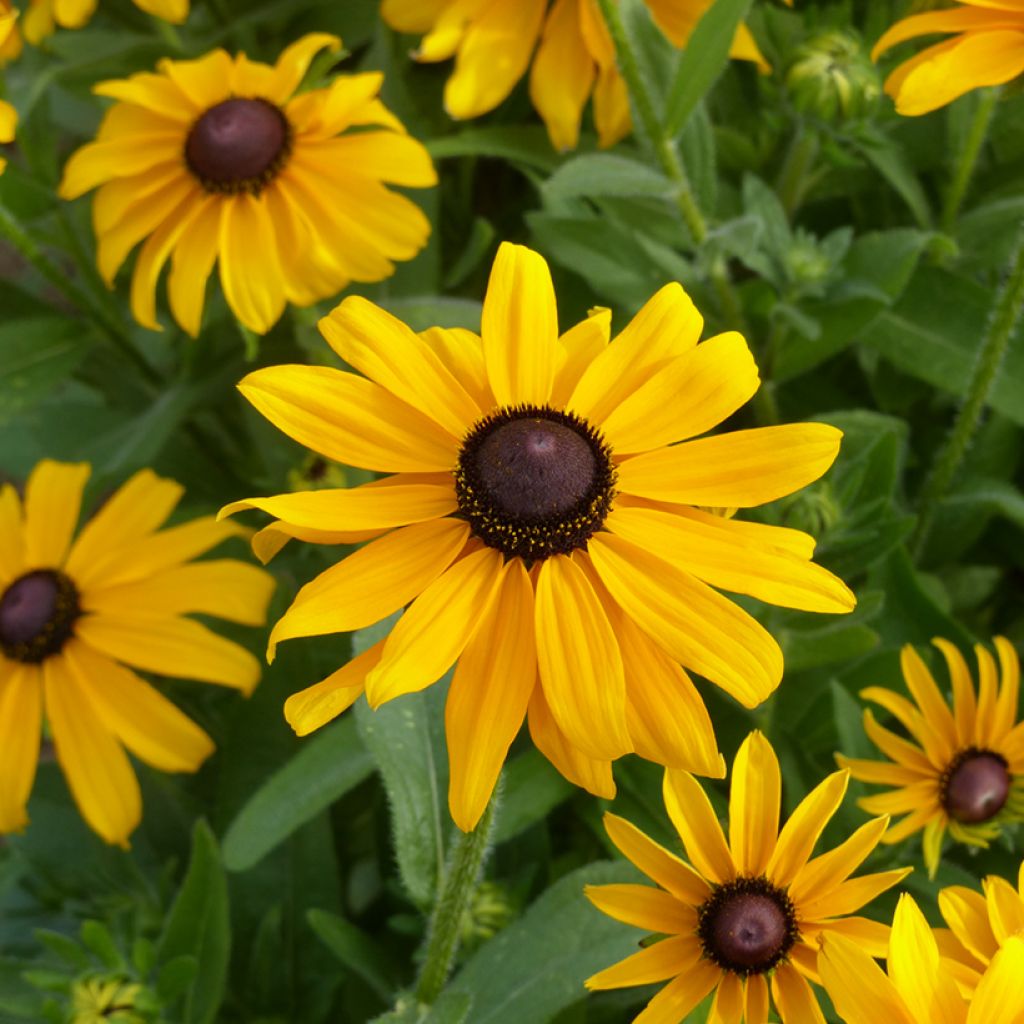

Rudbeckia hirta Marmalade Seeds - Black-eyed Susan
Rudbeckia hirta Marmalade Seeds - Black-eyed Susan
Rudbeckia x hirta Marmalade
Black-eyed Susan, Gloriosa Daisy, Yellow Ox-eye Daisy
Why not try an alternative variety in stock?
View all →This plant carries a 6 months recovery warranty
More information
We guarantee the quality of our plants for a full growing cycle, and will replace at our expense any plant that fails to recover under normal climatic and planting conditions.
Does this plant fit my garden?
Set up your Plantfit profile →
Description
From June until the first frost, organic Rudbeckia hirta 'Marmalade' is covered with numerous large semi-double orange-yellow heads surrounding a black centre. This perennial plant is usually grown as an annual. It forms a tall clump, 60 cm in height and about 40 cm wide that will fit well in a flower bed or a container. It is also an excellent cut flower for creating rustic bouquets. Easy to sow and cultivate in all types of soil in full sun or partial shade. Sow from February to April in a seed tray.
From the Asteraceae family, Rudbeckia hirta is a perennial plant native to the meadows of North America. Due to its short lifespan, it is more often grown as an annual or biennial plant. It does not live more than 2 to 3 years but naturally self-seeds quite easily. This Rudbeckia forms a clump of green basal leaves that are 5 to 10 cm long and slightly hairy. From the clump, sturdy and branched floral stems emerge, bearing narrower cauline leaves. These stems bear large "daisies" of about 8 to 10 cm in diameter. The ray florets are orange-yellow, surrounding a prominent cone that is dark brown, almost black, creating an interesting contrast. The 'Marmalade' cultivar is appreciated for its generosity: its bright flowers succeed from June until the first frost, making it possible to create lovely bouquets all summer long. Its flowers are nectar-rich. Plant a few in the vegetable garden to attract pollinating insects and butterflies. Leave the last dried flowers of autumn on the plant, as birds feed on the mature seeds contained in their centres.
Rudbeckia 'Marmalade' will brighten up any flower bed or border. It can also be planted in a large container. Pair it with other cut flowers to have on hand for creating charming bouquets. Consider Achillea millefolium Summerwine with its bright red flowers and Zinnia Pop Art Golden and Red with its yellow flowers speckled with red. Add a grass to your composition to lighten it up, try Stipa tenuissima Pony Tails, which is decorative with its golden summer flowering
Report an error about the product description
Flowering
Foliage
Plant habit
Botanical data
Rudbeckia
x hirta
Marmalade
Asteraceae
Black-eyed Susan, Gloriosa Daisy, Yellow Ox-eye Daisy
Cultivar or hybrid
Other Rudbeckia seeds
Planting and care
Before sowing your organic 'Marmalade' Rudbeckia, place your seeds in the vegetable compartment of your refrigerator for 4 weeks, breaking the seed dormancy and thereby improving the success of your sowing.
Sow the seeds in a seed tray between February and April, on the surface of a compacted seed compost. Cover the seeds with about 5 mm of substrate, lightly firming it down, and water with a fine mist. Place your tray in a well-lit area, without direct sunlight, at a temperature of 18°C to 22°C. The seeds will germinate in 10 to 15 days. As soon as the plants are strong enough to handle, transplant them into 7 cm pots. Gradually acclimatise them to a temperature of 15°C, 15 days before their final planting. Once all risk of frost is gone and the soil is well warmed up, plant your rudbeckias in full sun or partial shade in ideally deep and rich soil. Allow a distance of 20 to 30 cm between each plant.
It is also possible to sow directly in the ground in May or to sow under cover in September-October for planting in the garden the following spring.
Regularly remove faded flowers to prolong the flowering period.
Sowing period
Intended location
This item has not been reviewed yet - be the first to leave a review about it.
Flower seeds
Haven't found what you were looking for?
Hardiness is the lowest winter temperature a plant can endure without suffering serious damage or even dying. However, hardiness is affected by location (a sheltered area, such as a patio), protection (winter cover) and soil type (hardiness is improved by well-drained soil).

Photo Sharing Terms & Conditions
In order to encourage gardeners to interact and share their experiences, Promesse de fleurs offers various media enabling content to be uploaded onto its Site - in particular via the ‘Photo sharing’ module.
The User agrees to refrain from:
- Posting any content that is illegal, prejudicial, insulting, racist, inciteful to hatred, revisionist, contrary to public decency, that infringes on privacy or on the privacy rights of third parties, in particular the publicity rights of persons and goods, intellectual property rights, or the right to privacy.
- Submitting content on behalf of a third party;
- Impersonate the identity of a third party and/or publish any personal information about a third party;
In general, the User undertakes to refrain from any unethical behaviour.
All Content (in particular text, comments, files, images, photos, videos, creative works, etc.), which may be subject to property or intellectual property rights, image or other private rights, shall remain the property of the User, subject to the limited rights granted by the terms of the licence granted by Promesse de fleurs as stated below. Users are at liberty to publish or not to publish such Content on the Site, notably via the ‘Photo Sharing’ facility, and accept that this Content shall be made public and freely accessible, notably on the Internet.
Users further acknowledge, undertake to have ,and guarantee that they hold all necessary rights and permissions to publish such material on the Site, in particular with regard to the legislation in force pertaining to any privacy, property, intellectual property, image, or contractual rights, or rights of any other nature. By publishing such Content on the Site, Users acknowledge accepting full liability as publishers of the Content within the meaning of the law, and grant Promesse de fleurs, free of charge, an inclusive, worldwide licence for the said Content for the entire duration of its publication, including all reproduction, representation, up/downloading, displaying, performing, transmission, and storage rights.
Users also grant permission for their name to be linked to the Content and accept that this link may not always be made available.
By engaging in posting material, Users consent to their Content becoming automatically accessible on the Internet, in particular on other sites and/or blogs and/or web pages of the Promesse de fleurs site, including in particular social pages and the Promesse de fleurs catalogue.
Users may secure the removal of entrusted content free of charge by issuing a simple request via our contact form.
The flowering period indicated on our website applies to countries and regions located in USDA zone 8 (France, the United Kingdom, Ireland, the Netherlands, etc.)
It will vary according to where you live:
- In zones 9 to 10 (Italy, Spain, Greece, etc.), flowering will occur about 2 to 4 weeks earlier.
- In zones 6 to 7 (Germany, Poland, Slovenia, and lower mountainous regions), flowering will be delayed by 2 to 3 weeks.
- In zone 5 (Central Europe, Scandinavia), blooming will be delayed by 3 to 5 weeks.
In temperate climates, pruning of spring-flowering shrubs (forsythia, spireas, etc.) should be done just after flowering.
Pruning of summer-flowering shrubs (Indian Lilac, Perovskia, etc.) can be done in winter or spring.
In cold regions as well as with frost-sensitive plants, avoid pruning too early when severe frosts may still occur.
The planting period indicated on our website applies to countries and regions located in USDA zone 8 (France, United Kingdom, Ireland, Netherlands).
It will vary according to where you live:
- In Mediterranean zones (Marseille, Madrid, Milan, etc.), autumn and winter are the best planting periods.
- In continental zones (Strasbourg, Munich, Vienna, etc.), delay planting by 2 to 3 weeks in spring and bring it forward by 2 to 4 weeks in autumn.
- In mountainous regions (the Alps, Pyrenees, Carpathians, etc.), it is best to plant in late spring (May-June) or late summer (August-September).
The harvesting period indicated on our website applies to countries and regions in USDA zone 8 (France, England, Ireland, the Netherlands).
In colder areas (Scandinavia, Poland, Austria...) fruit and vegetable harvests are likely to be delayed by 3-4 weeks.
In warmer areas (Italy, Spain, Greece, etc.), harvesting will probably take place earlier, depending on weather conditions.
The sowing periods indicated on our website apply to countries and regions within USDA Zone 8 (France, UK, Ireland, Netherlands).
In colder areas (Scandinavia, Poland, Austria...), delay any outdoor sowing by 3-4 weeks, or sow under glass.
In warmer climes (Italy, Spain, Greece, etc.), bring outdoor sowing forward by a few weeks.



































